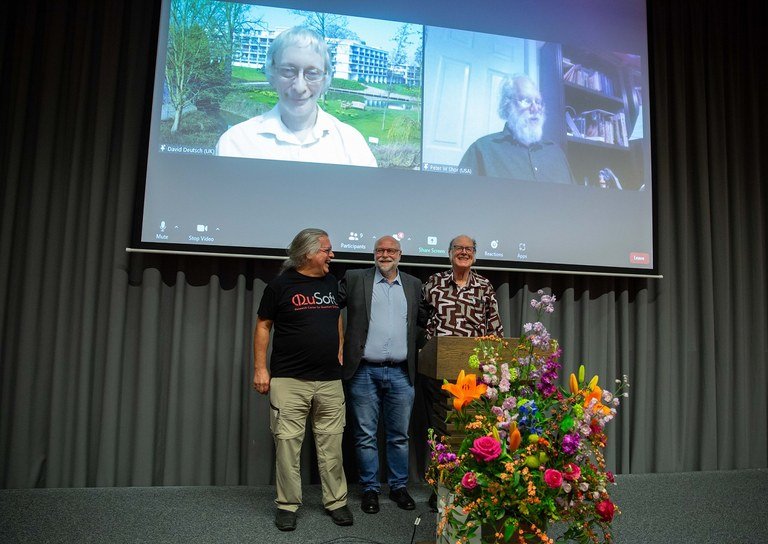What I did not tell you is that I wasn’t on holiday, I was at a conference and he had seen in the program that I was scheduled to talk about cryptography. He spotted me by the reception with my name tag but waited until I was powerless to talk to him, in the water. Bennett was in the habit of telling random strangers about Wiesner’s idea. Seriously, I was the first interested ‘victim’. To make it even more amazing, when I was on the plane to Puerto Rico I read a paper in Scientific American that he wrote, so that was when I learned his name. Next day I meet him and it would never be the same.
From this day we slowly started to continue to talk and visit each other and make these ideas progress until we invented what is known as BB84. This is the prototypical protocol of quantum cryptography that we invented, as the name indicates, in 1983 (laughs), BB of course being our initials. So that’s how we started quantum cryptography, still not taking it seriously at all. It was not our day job, I was still a computer scientist, teaching computer science and cryptography as well. He was still a physicist.
We were just having fun, when I started giving talks about it and was mostly ignored as it was so crazy, until we decided to show them and built a prototype. However, neither of us is an experimentalist, so we asked the help of three students, all three theoreticians as well, although Bennett’s student (John Smolin) had some training in experiments. It is a miracle we were able to build something that worked.
We built this prototype in 1989, and wrote an article in Scientific American that caught attention of the public and research community. Until then it was very obscure. And then some serious people thought it would be interesting to make it work on a larger scale. Today, quantum cryptography as we invented it, is taken seriously by many people and several governments. An expert at Toshiba estimated a 20 billion dollar market by 2035. I don’t know if that’s true but I like to think it might be.
Later, in 1992, Bennett and I were at a general conference on cryptography (classical of course). Bennett gave me a paper from Bill (William) Wootters and Asher Peres. I invited one of them to come to give a talk about their paper in Montréal, and somehow I had this inkling that it is going to be a very interesting talk, more than interesting, so I invited Charlie to come and listen to the talk as well as a former student of mine, Claude Crépeau, who was in Paris at the time.
And at some point during Wootters’s talk, Bennett asks a question, which seems completely irrelevant (would it make a difference if the protagonists shared an EPR pair?—that what we called entanglement at the time). After the talk, we went to my office and brainstormed about Bennett’s question, and within a few hours the answer came, and yes, it would make a difference, because we could use teleportation, which we invented for that purpose. So, quantum teleportation was invented as a result of Bennett’s apparently idle question. It was not at all planned. We were very lucky. Pure serendipity!

